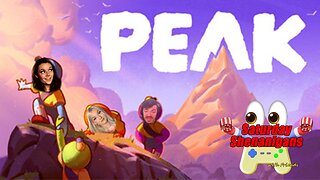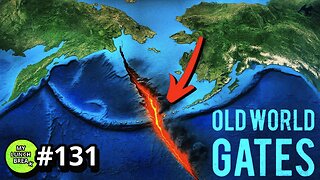Premium Only Content

Breast Cancer Stem Cell Research: Advances and Prospects
Cancer affects us all, and it's pretty likely you know someone who has had this disease. In fact, one in three people will be diagnosed with cancer in their lifetime. Cancer occurs when our own cells divide uncontrollably, avoid the many protections against abnormal cells, grow into large tumors, and spread uncontrollably.
But how does that happen, and why? That's a great question that has puzzled scientists for hundreds of years. In fact, it turns out that some cancers are driven by cells called cancer stem cells. Cancer stem cells are different from normal, healthy stem cells since they divide and survive outside of the body's control. These cells give rise to the many cancer cells that divide uncontrollably to form a tumor.
That spreads unchecked throughout the body. This happens in breast cancer. But how do these cancer cells divide seemingly unchecked? Part of the answer involves the immune system. When we think of the immune system, we think of its role in keeping us healthy and killing disease causing pathogens that enter our body, such as bacteria or viruses. But the immune system is also in charge of killing any cell that may start to misbehave in an attempt to prevent cancer.
However, some cancer cells acquire changes in their DNA sequence and begin to produce high levels of proteins that render these cells invisible to the immune system. One such invisibility cloak is the protein CD47.
Which helps give cancer cells and cancer stem cells the power to cloak themselves from the immune system's defenses. Normally you have special immune cells known as macrophages, literally big eating cells that physically gobble up bacteria or abnormal cells such as cancer cells. However, invisibility cloak CD47 renders cancer cells invisible to macrophages, allowing the cancer cell to divide and supervise and eventually form a tumor.
To repeal the invisibility cloak and make cancer cells vulnerable to the immune system, scientists at Stanford University devised an ingenious strategy. They designed an antibody that can bind it to CD47 and disrupt the invisibility cloak. Antibodies bind and identify material to be destroyed. So what did these scientists have in mind with this CD47 antibody? Here is their idea.
When the CD47 antibody is present, it would bind to CD47 on the surface of cancer cells, removing the invisibility cloak and alerting the immune system that something is wrong with the CD47 expressing cancer cell and that it should be destroyed. Studies in Petri dishes and mice suggest that this actually happens.
When the CD47 antibody is present, most cancer cells are destroyed by macrophages, those big eating immune cells. When the CD47 cell is eaten by macrophages, they digest the cell into smaller components, which activate the immune system even more. This amplified immune response creates a stronger attack against the cancer cells, which could help destroy the remaining ones.
Using this approach, the scientists would like to harness the body's own defense mechanism to kill the cancer stem cells, which often persist after chemotherapy and radiation and may be responsible for cancer relapse. By helping the immune system identify what is cancer and removing the cells in visibility cloak, we can make cancer stem cells vulnerable to the body's own defense system thanks to funding from Proposition 71.
Scientists at Stanford University are now testing the CD47 antibody for safety and potential efficacy in a human clinical trial of breast cancer patients. This approach could be applied to many other cancers, such as certain types of colon cancers and leukemias. As scientists and patient advocates build on the progress that Proposition 71 funding has enabled, we must keep the momentum going, understanding that there's still much work to be done.
We must remember that human trials will celebrate successes, but barriers will surface along with complications and challenges, so patience and understanding of the scientific discovery process are essential.
-
 1:03:29
1:03:29
Hard Lens Media
7 hours ago $8.70 earnedTRUMP Addressing The Nation As He Announced US Bombed Three Iranian Nuclear Sites
95.9K41 -
 16:46
16:46
Exploring With Nug
17 hours ago $11.45 earnedWe Recovered a Stolen Chevy Malibu From the River! Underwater Vehicle Search!
181K10 -
 4:58:30
4:58:30
Spartan
8 hours agoPro Halo Player | Sens Crisis Grind
127K2 -
 3:15:25
3:15:25
Mally_Mouse
9 hours agoSpicy Saturday!! - Let's Play: PEAK
131K -
 24:53
24:53
MYLUNCHBREAK CHANNEL PAGE
1 day agoFault Lines are GATES - Pt 1
109K30 -
 2:38:42
2:38:42
Barry Cunningham
15 hours agoIS PRESIDENT TRUMP DIRECTING A MOVIE...OR IS IT CHESS? AND MORE NEWS!
100K42 -
![Nintendo Switch It UP Saturdays with The Fellas: LIVE - Episode #24 [Mario Party Superstars]](https://1a-1791.com/video/fww1/49/s8/1/X/M/v/V/XMvVy.0kob-small-Nintendo-Switch-It-UP-Satur.jpg) 3:31:41
3:31:41
MoFio23!
16 hours agoNintendo Switch It UP Saturdays with The Fellas: LIVE - Episode #24 [Mario Party Superstars]
48K -
 15:19
15:19
T-SPLY
1 day agoMayor Busted: Nashville Mayor Not Concerned Over Leaking Federal Agents Information!
92.9K127 -
 14:05
14:05
Mrgunsngear
17 hours ago $5.52 earnedHolosun 507 Comp Review: The Best Pistol Optic?
75.4K10 -
 3:00:30
3:00:30
nickelsYT
9 hours ago🔴The Finals Saturday Night WT
23K